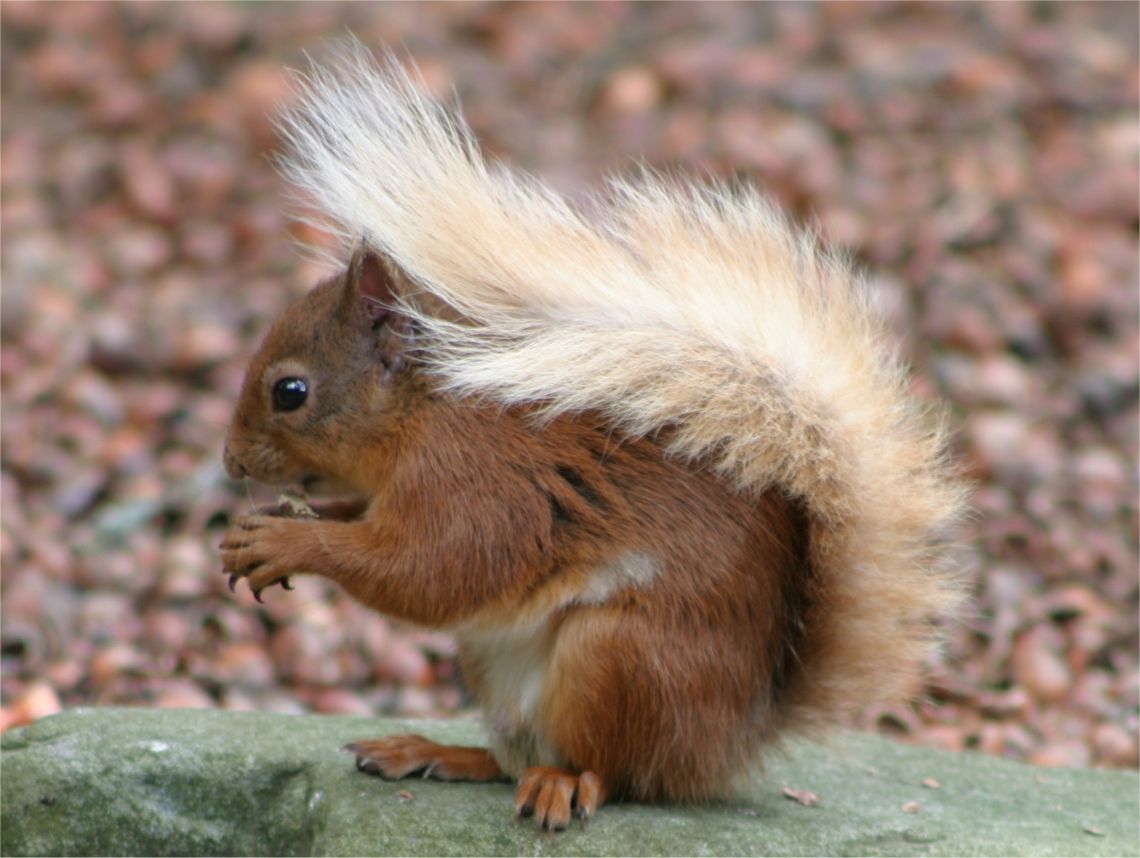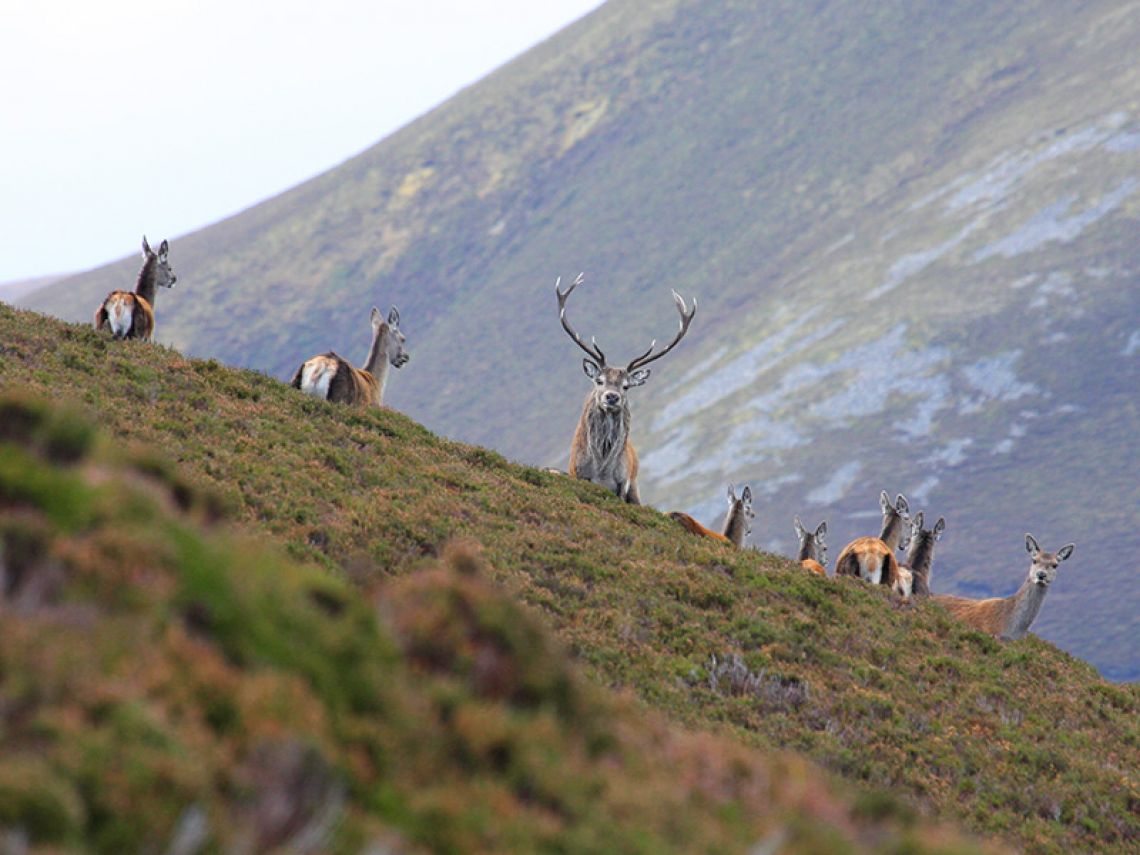The Estate
Landscape & Wildlife

Wildlife
Situated in the Cairngorms National Park, Glenlivet is home to a variety of habitats with open expanses of heather covered hills, clear rushing burns and rivers, sheltered straths, glens and woodlands.
Amongst this varied landscape can be found a diversity of wildlife and many sites of importance. The unique landscape creates excellent conditions for many upland species of birds and animals. Glenlivet Estate is home to some of the largest stocks of wildlife to be found in the Cairngorms.
A number of Scottish favourites are often seen here including the red squirrel and red deer. Some of the rarer animals such as the golden eagle and black grouse are also often spotted. Over 200 species of birds can be seen throughout the year. The range of wild mammals found on the estate is also highly diverse, and includes species such as the wildcat, otter and pine marten.
Watching Wildlife
There are many ways that you can enjoy watching wildlife in the countryside; enjoy a stroll along one of our network of waymarked trails and see what you can spot, join our Ranger on a guided walk at a family event to find out more, or take an off-road safari with a local expert to get off the beaten track.
Please just remember to take care not to disturb the wildlife, especially during nesting season in the springtime.

The Geological Landscape
Dominating Glenlivet’s landscape, the Cairngorm area is visibly different to other parts of Scotland. Its appearance is partly determined by the areas complex geological past. The more rounded, rolling hills and broad open straths and glens are in stark contrast to the rugged, steep sided appearance of the western Highlands.
These are a relic of a warmer climate before the last Ice Age and were largely formed by river and water erosion. Deep glens with smooth steep sides were cut into the hills. With softer sedimentary rocks like the Old Red Sandstone eroded more easily, the more resistant quartzites, schists and granites were left to form the higher ground. By the time the climate started to cool down many of the sediments that had previously covered the hillsides had been washed away, exposing the harder rocks to the action of ice and frost.
Most of the Glenlivet Estate stands on Dalradian rocks including the Ladder Hills, where hard, resistant quartzites at lower levels are topped by pelite to form the summit ridge. Old Red Sandstone still covers metamorphic rocks in the central part of the estate between Tomintoul and Tomnavoulin. The basin of the river Livet and its tributaries include the only area of granite to be found on the Estate.
The presence of limestone in Glenlivet is unusual for the Highlands and has had a unique impact on vegetation, giving many plants and flowers the chance to grow and creating a landscape dotted with almost random areas of lush greenery. On much of the hill ground, glacial deposits that impeded drainage have also created the perfect conditions for peaty soils, bogs and blanket peat.
Statutory Natural Heritage Designations
The Estate is designated as being of Great Landscape Value and is part of the Cairngorms Straths Environmentally Sensitive Area. There are five Sites of Special Scientific Interest (SSSI), plus the rivers and burns as tributaries of the River Spey SSSI;
- Ladder Hills* (Peatland and upland heather moor)
- Lower Strathavon Woodlands (Semi-natural broadleaved woodlands)
- Bochel Wood (Birch and Juniper woodland / heath)
- Creag nan Gamhain* (Grassland and semi-natural woodland)
- Fodderletter (Wetland / mire and grassland)
- River Spey tributaries*
*Also designated as Special Areas of Conservation (SAC)